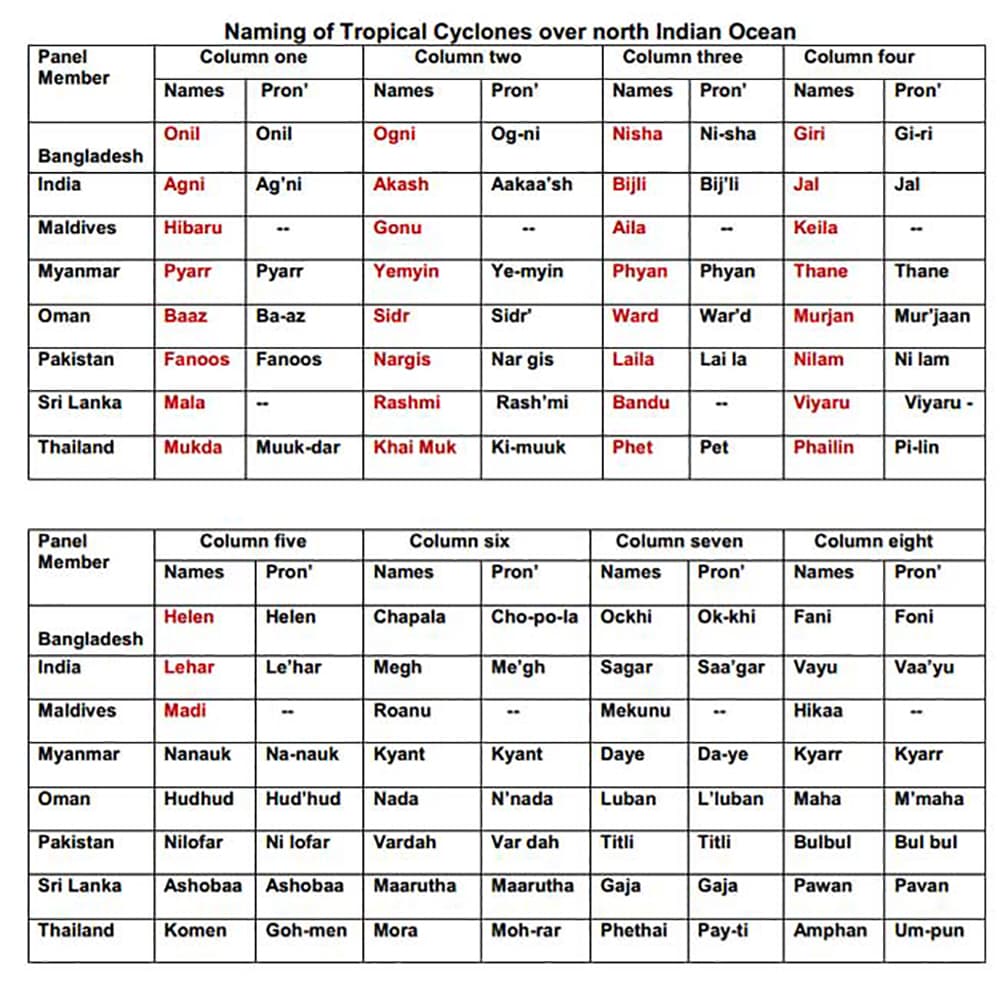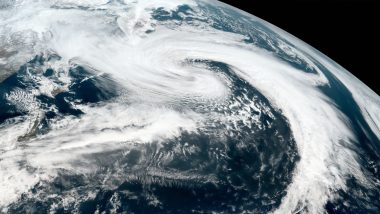New Delhi, November 11: After Cyclone Bulbul, the next tropical cyclone that would be formed in the Indian sub-continent will be named 'Pawan'. According to the existing list, 'Pawan' is the name given by Sri Lanka. The names of the cyclones that form in the Indian Ocean are sequentially listed in a table in alphabetical order, provided by the eight countries of the subcontinent. The cyclonic storm Pawan means 'wind'. After Cyclone Pawan, the next cyclone will be named 'Amphan', a name given by Thailand.
The names of the cyclones in the Indian Ocean region are decided by eight countries including India, Pakistan, Sri Lanka, Bangladesh, Maldives, Myanmar, Oman and Thailand. These eight nations have been giving names to cyclonic storms since 2004. Till date, 64 cyclones have been named by these eight nations, of which eight names have been given by India -- Agni, Akash, Bijli, Jal, Lehar, Megh, Sagar and Vayu. Of the 64 names suggested, 62 have already been used.
The list of the names of cyclones will end after Cyclone Amphan. After all the cyclone names are used , the committee would meet again, and a fresh list will be prepared by the Regional Specialized Meteorological Centre (RSMC). The recent cyclones that have been formed in the Indian Ocean are Cyclone Fani (Bangladesh), Cyclone Hikaa (Maldives), followed by Kyarr (Myanmar), Maha (Oman), Bulbul (Pakistan). What Will be The Next Cyclone Called, Know All About How Cyclonic Storms Are Named.
Here's The List of Names Given to Cyclones:

A tropical cyclone which will be formed after Cyclone Maha would be called Cyclone Bulbul. The name Bulbul, pronounced "Bul Bul," is a name given by Pakistan. According to the nomenclature, the first tropical cyclone named by Pakistan was Fanoos, followed by Nargis, Laila and Nilam. After Kyarr, Maha and Bulbul, the cyclone which forms next will be named "Pawan."
The last name on the list of tropical cyclones is Amphan, a name given by Thailand. Cyclone Fani, which hit Odisha in May, was the longest-lasting cyclone over the Bay of Bengal, which caused havoc for over 11 days. It was followed by Cyclone Vayu, which was the second most intense cyclonic storm to have formed near the Indian coast.
(The above story first appeared on LatestLY on Nov 11, 2019 12:44 PM IST. For more news and updates on politics, world, sports, entertainment and lifestyle, log on to our website latestly.com).













 Quickly
Quickly





















